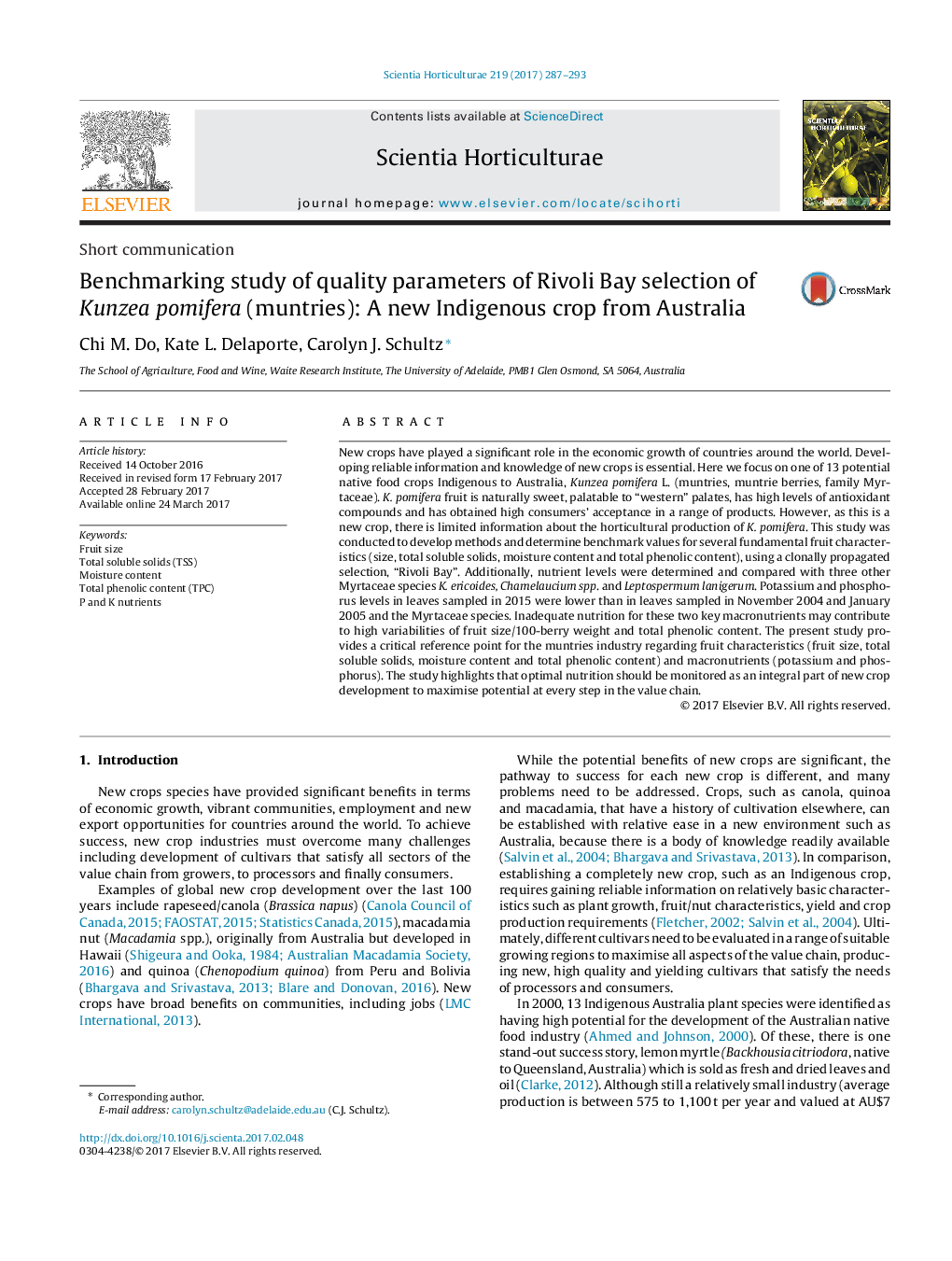| Article ID | Journal | Published Year | Pages | File Type |
|---|---|---|---|---|
| 5769735 | Scientia Horticulturae | 2017 | 7 Pages |
â¢Benchmark for fruit characteristics for Australian native berry, muntries.â¢Soluble solids and moisture have acceptable (<15%) coefficients of variation.â¢100-berry weight and total phenolic content had higher coefficients of variation.â¢K deficiency may contribute to variation in 100-berry weight and total phenolics.â¢Optimal nutrition should be integral to development of new Indigenous crops.
New crops have played a significant role in the economic growth of countries around the world. Developing reliable information and knowledge of new crops is essential. Here we focus on one of 13 potential native food crops Indigenous to Australia, Kunzea pomifera L. (muntries, muntrie berries, family Myrtaceae). K. pomifera fruit is naturally sweet, palatable to “western” palates, has high levels of antioxidant compounds and has obtained high consumers' acceptance in a range of products. However, as this is a new crop, there is limited information about the horticultural production of K. pomifera. This study was conducted to develop methods and determine benchmark values for several fundamental fruit characteristics (size, total soluble solids, moisture content and total phenolic content), using a clonally propagated selection, “Rivoli Bay”. Additionally, nutrient levels were determined and compared with three other Myrtaceae species K. ericoides, Chamelaucium spp. and Leptospermum lanigerum. Potassium and phosphorus levels in leaves sampled in 2015 were lower than in leaves sampled in November 2004 and January 2005 and the Myrtaceae species. Inadequate nutrition for these two key macronutrients may contribute to high variabilities of fruit size/100-berry weight and total phenolic content. The present study provides a critical reference point for the muntries industry regarding fruit characteristics (fruit size, total soluble solids, moisture content and total phenolic content) and macronutrients (potassium and phosphorus). The study highlights that optimal nutrition should be monitored as an integral part of new crop development to maximise potential at every step in the value chain.
Graphical abstractDownload high-res image (254KB)Download full-size image
